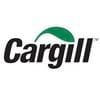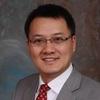Explore all the information on
Salmonella in poultry
Poultry can become infected with many different types of salmonella; about 10 percent of all Salmonella spp. have been detected in poultry. The most important are Salmonella Typhimurium and Salmonella Enteritidis. Other serotypes frequently occurring in poultry worldwide are, for example, Salmonella Hadar, Salmonella Livingstone, and Salmonella Senftenberg. In most cases, the birds are not sick and the production is not affected. The degree of illness depends on factors of both the bacteria and the host. The bacterium’s serotype and phage type is of significance but also the type of animal, age and general health status. S.Typhimurium and S. Enteritidis may induce clinical symptoms in poultry. It is mainly in very young chickens aged up to two weeks that salmonella can cause disease and death. The symptoms may vary and include weakness, loss of appetite and poor growth. The animals are crowded close to heat sources and sit with drooping wings and their eyes closed.
The highly anticipated 2026 Latin American Poultry Summit is set to bring together leading voices from across the Americas to explore the future of poultry production, innovation and sustainability. With a full day of expert sessions, global perspectives and networking opportunities, attendees can expect a dynamic program focused on driving progress and strengthening collaboration within the industry.
The event will take place on Monday, Jan. 26, and will open with a presentation of...
Comments : 0
Recommendations: 0
Necrotic Enteritis in the Post-AGP Era: A Complex Multifactorial Challenge
The restriction on antibiotic growth promoters (AGPs) in the broiler industry has led to a significant resurgence of enteric diseases, particularly necrotic enteritis (NE). This complex disease, estimated to cost the global industry USD 6 billion annually, requires a deeper understanding to develop effective control strategies. A recent review by Shahna Fathima, Walid Ghazi Al Hakeem, Revathi...
Comments : 1
Recommendations: 0
I. INTRODUCTION The basis for effective control of Salmonella infections in poultry production is good farm management and hygienic practices as well as testing and elimination of positive flocks in some countries. While many different measures have been recommended in meat chicken farms, vaccination with live-attenuated vaccines is likely to have a central role in the reduction of Salmonella in commercial operations by increasing the passive immunity of birds and...
Comments : 0
Recommendations: 0
I. INTRODUCTION Contamination of eggshells by Salmonella Typhimurium is a major public health and food safety issue to the Australian poultry industry. In Australia, the majority of the egg and egg related foodborne outbreaks are caused by S. Typhimurium (The OzFoodNet Working group 2015). Biofilm formation is one of the survival mechanisms utilised by Salmonella spp. against physical and chemical stress factors in the environment (Steenackers et al. 2012). A biofilm is a...
Comments : 0
Recommendations: 0
1. Introduction Eggs and meat from poultry are indispensable protein sources in people's meals in Bangladesh [1]. However, the advancement in the poultry production is often interrupted by the overwhelming occurrence of infectious diseases in low resource settings of developing countries such as Bangladesh. Occurrence of these diseases, which incur a colossal loss due to less production of a quality product and also from the treatment cost, are attributable to noncompliance...
Comments : 0
Recommendations: 0
Luisa Gene (Cargill) speaks on microbiome analysis with the help of artificial intelligence to improve performance in this Engormix interview during IPPE 2025 in Atlanta, USA.
...
Comments : 2
Recommendations: 0
1. Introduction Salmonellosis is among the major causes of foodborne gastrointestinal infection in humans worldwide [1] and the second cause following campylobacteriosis in the European Union (EU) [2]. Particularly, non-typhoidal Salmonella spp. (NTS) are one of the bacterial pathogens with the highest disease burden among human foodborne enteric diseases [3]. Poultry products are considered as a major source of human infection in cases of foodborne salmonellosis caused by NTS [4]....
Comments : 0
Recommendations: 0
1. Introduction In Ethiopia, poultry production plays a crucial role in animal agriculture, driven by the growing demand for poultry meat and eggs, which are important sources of protein and income [1,2]. Poultry farming significantly contributes to food security and economic stability [3,4]. However, the poultry industry in Ethiopia is confronted with a complex web of challenges that significantly hinder its productivity and sustainability [4,5]. Chief among these are the...
Comments : 0
Recommendations: 0
I. INTRODUCTION Egg-associated Salmonella infection is a significant international public health problem. Internal contamination of eggs with S. Enteritidis has been the principal concern in North America and Europe, whereas external contamination with S. Typhimurium has been the predominant issue in Australia. Some strategies for controlling egg-borne Salmonella are designed to act with precision against epidemiologically important serovars, but others are applicable...
Comments : 0
Recommendations: 0
Dr. Ioannis Mavromatis, MEA Technical Sales Consultant for Calier, explores how Salmonella threatens poultry producers in the Middle East and North Africa. He discusses its impact on human health, farm contamination, and the role of vaccination, biosecurity, and farm management in controlling outbreaks....
Comments : 2
Recommendations: 0
1. Introduction Chickens represent the most widespread source of animal protein that is acceptable for nearly all communities, and, not surprisingly, the highly efficient commercial production of chickens is practised daily worldwide. However, chickens also represent a reservoir of zoonotic agents like Salmonella or Campylobacter. Chickens in commercial production are hatched from disinfected eggs in a clean hatchery environment, despite Gallus gallus being evolved to hatch in...
Comments : 0
Recommendations: 1
1. Introduction Salmonella Enteritidis (SE) is one of the most prevalent serovars involved in the contamination of chicken products that cause human infection via the consumption of inadequately cooked chicken meat and eggs [1–4]. Because adult chickens with non-typhoidal Salmonella infection do not exhibit signs of illness, they can remain carriers, releasing the bacteria into the environment through their feces [3]. The poultry industry aims to decrease Salmonella...
Comments : 0
Recommendations: 0
.jpg&w=3840&q=75)

Innovative Approaches in Specialty Nutrition: Evonik’s Strategy for Product Development
Suggested link
Introduction Animal husbandry, the agricultural practice of breeding and raising livestock, is a major food-producing industry worldwide. The increasing global demand for animal protein results in rapidly growing animal production as well as the growth of animal feed and the feed additive market. The feed additives have played a significant role in the sustainability of the livestock industry. There are four major drivers for the growth of the animal feed additive market including:...
Comments : 0
Recommendations: 0
Dr. Ioannis Mavromatis, MEA Technical Sales Consultant for Calier, discusses Salmonella’s impact on poultry in the Middle East and North Africa. He covers its risks to human health and farm contamination...
Comments : 1
Recommendations: 0
I have a laying flock that are down with salmonella galinarum. Is it possible to inject the birds with a live salmonella vaccine? If yes what will be my expectations thanks. ...
Comments : 0
Recommendations: 0
Theresia Lavergne (Natural Biologics) explains her research with yeast components and phytogenics to enhance flock health and help sustain egg production in this Engormix interview during IPPE 2025 in Atlanta, USA.
...
Comments : 0
Recommendations: 0
.jpg&w=3840&q=75)

Best Practices for Sustainable Waste Management and Environmental Solutions
Suggested link
From Market to Meal: A Guide to Safe Chicken Handling Author: A.Ashraf Chicken is a staple in many diets worldwide, prized for its versatility, affordability, and nutritional value. However, handling and storing broiler chicken improperly can lead to contamination by harmful pathogens, posing serious health risks. Whether you’re buying live chicken, fresh cuts, or frozen meat, understanding the risks and taking proper precautions is essential to ensure safety and maintain...
Comments : 0
Recommendations: 0
Dr. Shyam Vane, Business Manager at HIPRA India Private Limited, speaks about how Salmonella vaccines and programs are helping farmers boost productivity, reduce losses, and deliver safer poultry products to Indian consumers....
Comments : 0
Recommendations: 0
Thierry Vendrell, International Sales Director of Calier, highlights the key features and advantages of Calier's Salmonella vaccines, designed to enhance poultry health and improve disease prevention....
Comments : 0
Recommendations: 0




































